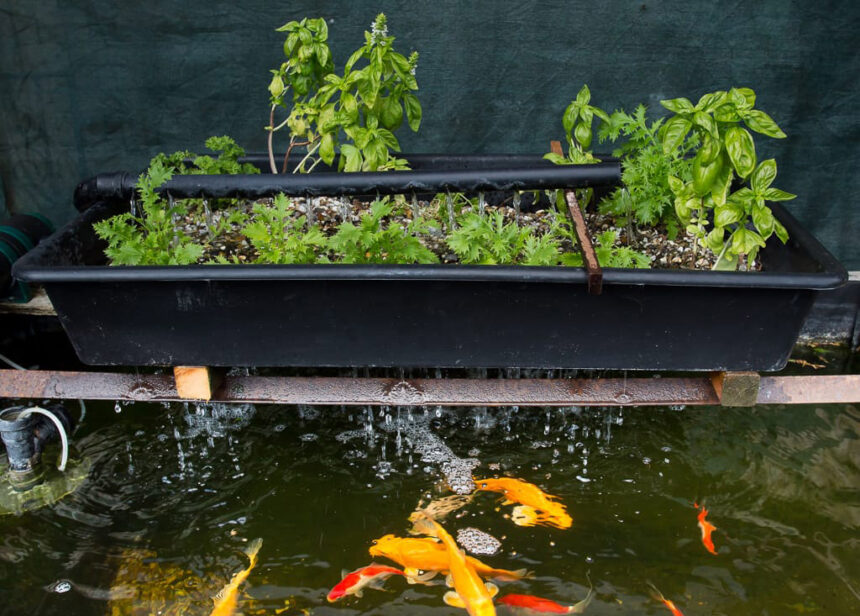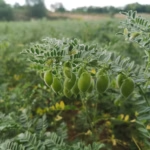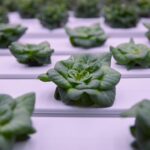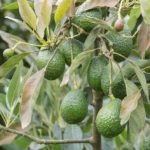Aquaponics is an innovative and sustainable farming method that combines aquaculture (raising fish) with hydroponics (growing plants without soil). By creating a closed-loop system where fish waste provides nutrients for plants and plants filter the water for fish, aquaponics reduces resource use while increasing productivity. A well-designed aquaponics system can be both environmentally friendly and profitable. Here’s how to build one successfully.
1. Understand the Basics of Aquaponics
Aquaponics relies on a symbiotic relationship between fish, plants, and beneficial bacteria. The key components of the system include:
- Fish tanks where fish produce waste.
- Grow beds where plants absorb nutrients from fish waste.
- Biofilters that convert ammonia from fish waste into plant-usable nitrates.
- Water pumps that circulate nutrient-rich water between the tanks and grow beds.
2. Choose the Right Location
To ensure sustainability and efficiency, select a location with:
- Access to fresh water for system stability.
- Adequate sunlight if using an outdoor system.
- Protection from extreme weather such as greenhouses for temperature control.
- Proximity to markets to reduce transportation costs and increase profitability.
3. Select Suitable Fish and Plants
Choosing the right fish and plant species ensures system balance and profitability.
- Popular fish choices: Tilapia, catfish, trout, and koi due to their hardiness and fast growth.
- Ideal plants: Leafy greens (lettuce, spinach, basil), herbs, and fruiting plants like tomatoes and peppers.
- Match species requirements: Ensure that fish and plants thrive in the same temperature and water conditions.
4. Design the System for Efficiency
There are different types of aquaponics systems, and selecting the right one depends on space, budget, and goals:
- Media Bed System: Uses gravel or clay pebbles to support plant roots and filter water. Best for beginners.
- Deep Water Culture (DWC): Plants float on rafts in a nutrient-rich water bed. Suitable for commercial setups.
- Nutrient Film Technique (NFT): A thin film of water flows over plant roots in channels, ideal for small leafy greens.
5. Maintain Water Quality
Water quality is crucial for the health of both fish and plants. Key factors to monitor include:
- pH Levels (6.5–7.5): Ensure balance for plant nutrient absorption and fish health.
- Ammonia and Nitrate Levels: Beneficial bacteria should effectively convert fish waste into nutrients.
- Dissolved Oxygen: Maintain proper aeration with air pumps and avoid overcrowding fish.
- Temperature Control: Keep stable conditions suited for both fish and plants.
6. Develop a Feeding and Waste Management Plan
- Use high-quality fish feed to minimize excess waste.
- Avoid overfeeding, as uneaten food can cause water contamination.
- Introduce natural pest control methods, such as beneficial insects, to maintain an organic system.
7. Ensure Profitability and Marketability
To turn your aquaponics system into a profitable venture:
- Sell fresh, organic produce and fish to local restaurants, farmers’ markets, and grocery stores.
- Diversify revenue streams by offering farm tours, workshops, or training programs.
- Optimize production by scaling operations and automating water circulation and monitoring.
- Reduce operational costs by using renewable energy sources like solar panels.
8. Adopt Sustainable Practices
A truly sustainable aquaponics system should:
- Recycle water efficiently to reduce waste.
- Use organic farming methods to maintain ecosystem health.
- Integrate renewable energy solutions for long-term cost savings.
Building a sustainable and profitable aquaponics system requires careful planning, proper species selection, efficient system design, and ongoing maintenance. By optimizing resources and adopting eco-friendly practices, farmers can create a highly productive, cost-effective, and environmentally friendly food production system. Aquaponics not only conserves water and space but also offers a scalable solution for sustainable agriculture and food security.








